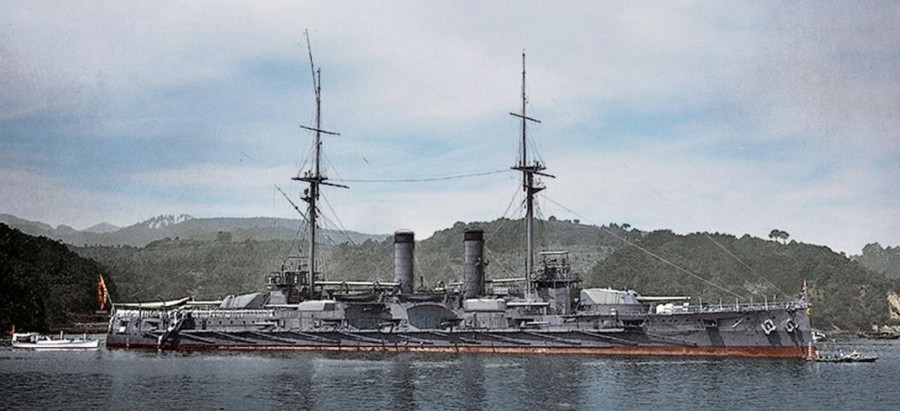The Japanese have never been great innovators but are superlative copiers. The Japanese spies (every Sushi Bar has one) had been reporting on the British and Australis conversions of the old pre-dreadnoughts to Area Defence Vessels. The Japanese were quite happy to do the same to their older semi-dreadnoughts for similar usage. The Japanese had more attack oriented roles in mind for their vessels as well. With so many small islands to control and garrison these ships were ideal. Halve the hangar to hold 2-3 seaplanes and several hundred troops the ships could visit all the little islands and islets dropping off squads and quelling any resistance with its guns and aircraft.

The ships were increasingly demilitarised from 1919 when they were reduced to training ships with guns and boilers being removed. 1924 saw them being renovated to their final duties as Area Defence Vessels. These two conversions would layout the template for the conversion of the other old pre-dreadnought type vessels, that the Japanese needed to keep in service, to release front line vessels back to a main fleet role, rather than having to be sidelined into secondary duties that these types of vessels could undertake. The standard 5 size hangar for three large and two small seaplanes was fitted. Single 6", 3" AA, and later 25mm guns made up the minor armaments that joined the 'A' 12" twin turret. Utilising parts and boilers from the later refurbished ships these two vessels were converted to oil firing turbine engined units. While the ships may have been nearly 35+ years old during WW2 they still provided excellent service. Both eventually being sunk in harbours where they were acting as flying boat support ships.
The ADV concept meant that the Japanese did not need to build the large seaplane carriers like the Chitose and Nisshin, but they did so anyway. This was done as the hulls and superstructure were designed for easy conversion to true aircraft carriers. Aircraft carriers being strictly limited by treaty till after 1935.

.png)